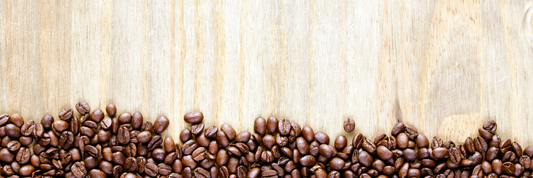Packaging plays a crucial role in protecting products, enhancing brand identity, and improving logistics. Understanding the different types of packaging is essential for businesses that want to optimize their supply chain and meet consumer demands. In this guide, we’ll explore the three main types of packaging—primary, secondary, and tertiary packaging—along with key considerations for choosing the right packaging solutions.
What is Packaging and Why is it Important?
What is Packaging?
Packaging refers to the process of enclosing or protecting products for distribution, storage, sale, and use. It serves multiple functions, including product protection, branding, convenience, and sustainability.
Functions of Packaging
-
Product Protection – Prevents damage, contamination, and spoilage.
-
Branding & Marketing – Enhances product presentation and attracts customers.
-
Convenience & Usability – Makes handling, storage, and transportation easier.
-
Sustainability – Supports environmental efforts by using eco-friendly materials.

Three Main Types of Packaging
Primary Packaging
Primary packaging is the first layer of packaging that comes into direct contact with the product. It plays a critical role in preserving product integrity and enhancing customer experience.
Examples of Primary Packaging:
-
Food & Beverages: Bottles, cans, cartons, paper plates, wrappers
-
Pharmaceuticals: Blister packs, pill bottles, vials
-
Cosmetics & Personal Care: Jars, tubes, pump bottles
Functions of Primary Packaging:
- Protects the product from external elements
- Ensures hygiene and safety
- Provides essential information (ingredients, expiration dates, usage instructions)
- Enhances brand visibility and consumer appeal

Secondary Packaging
Secondary packaging is the outer packaging that holds multiple units of primary-packaged products. It is often used for branding, bundling, and additional protection during transportation.
Examples of Secondary Packaging:
-
Retail Packaging: Cardboard boxes, shrink wraps, cartons
-
Food & Beverage Packaging: Multi-pack bottles, boxed chocolates
-
E-commerce Packaging: Corrugated mailers, padded envelopes
What Makes Corrugated Packaging Become Popular?
Functions of Secondary Packaging:
- Facilitates transportation and storage
- Provides additional branding opportunities
- Helps organize and bundle products
- Enhances shelf appeal in retail environments

Tertiary Packaging
Tertiary packaging is used for bulk handling, storage, and transportation of goods. It is not typically visible to consumers but is crucial for logistics and distribution.
Examples of Tertiary Packaging:
-
Pallets – Used for stacking multiple cartons and boxes
-
Crates – Protect delicate items during shipping
-
Stretch Wraps & Straps – Secure bulk shipments for stability
Functions of Tertiary Packaging:
- Ensures safe transportation of goods in large quantities
- Reduces the risk of damage during handling
- Improves efficiency in warehousing and logistics

Types of Packaging Products
Single-Product Packaging
Single-product packaging is designed to protect and showcase individual items while enhancing their appeal.
Shelf-Ready Packaging Boxes
-
Used in retail stores for easy stocking and display.
-
Often pre-designed to hold multiple single units while allowing quick access.
-
Examples: Snack boxes, canned food displays.
Packaging Sleeves and Bands
-
Thin cardboard or paper wraps used around a product.
-
Adds branding without fully enclosing the product.
-
Common for food packaging (e.g., sandwiches, ready meals) and personal care products.
Candy Wrappers
-
Made from foil, plastic, or wax-coated paper to protect confectionery.
-
Keeps candies fresh while providing branding space.
-
Examples: Chocolate bar wrappers, individually wrapped candies.
Liquid Product Packaging
Liquid products require secure and leak-proof containers that maintain freshness and prevent spillage.
Bottles: Glass or Plastic Bottles
-
Glass bottles: Premium feel, reusable, recyclable, used for beverages, sauces, and cosmetics.
-
Plastic bottles: Lightweight, cost-effective, used for water, soft drinks, and cleaning products.
Cans: Aluminum or Steel Cans
-
Aluminum cans: Lightweight, recyclable, used for soft drinks, energy drinks, and beer.
-
Steel cans: Heavier, used for food items like soups and canned vegetables.

Food Product Packaging
Food packaging needs to maintain freshness, prevent contamination, and offer convenience.
Flexible Packaging: Pouches, Sachets, and Bags
-
Made from plastic, aluminum, or laminated films.
-
Used for snacks, instant coffee, pet food, and frozen food.
-
Lightweight and cost-effective.

Canned Packaging: Metal Cans or Jars
-
Metal cans: Used for long-term storage of vegetables, fish, and soups.
-
Glass jars: Preserve freshness and are reusable for items like jams, sauces, and pickles.
Bottles and Jars: Glass or Plastic Containers
-
Suitable for beverages, sauces, honey, and spreads.
-
Glass bottles and jars provide premium quality and reusability.
-
Plastic bottles and jars offer durability and cost efficiency.
Glass Or Plastic Jar: Which Is Better for Food Storage?
Vacuum Packaging: Sealed Bags or Pouches
-
Removes air to extend shelf life.
-
Common for cheese, coffee, deli meats, and frozen food.

Health and Beauty Product Packaging
Cosmetic and healthcare products require specialized packaging for preservation, usability, and branding.
Pump Bottles
-
Used for liquid soaps, lotions, shampoos, and hand sanitizers.
-
Allows controlled dispensing of products.
Dropper Bottles
-
Designed for facial oils, essential oils, serums, and medicinal drops.
-
Ensures precise application.
Stick Packaging
-
Used for lip balms, solid perfumes, deodorants.
-
Provides easy application and portability.
Airless Containers
- Prevents oxidation and contamination of beauty products.
-
Used for moisturizers, serums, and pharmaceutical creams.
Packaging Solutions for Multiple Products
Some packaging solutions are designed to bundle multiple products for retail, promotional purposes, or ease of transportation.
Display Boxes
-
Cardboard or plastic boxes with cut-out windows for easy product visibility.
-
Common for cosmetics, snacks, and electronics.
Shrink Foil
-
Thin plastic film that tightly wraps multiple products together.
-
Used for bundling beverage cans, bottled drinks, and multi-pack food items.
Plastic Rings
-
Holds together canned drinks or bottles for easy carrying.
-
Used for six-packs of soda or beer.
Decorative Packaging
Decorative packaging enhances the aesthetic appeal of gifts and premium products.
Wrapping Paper
-
Used for gift packaging, promotional items, and premium products.
-
Available in various colors, textures, and prints.
Bows and Ribbons
-
Adds a luxurious and elegant touch to packages.
-
Common in gift packaging and holiday season sales.
Packaging for Carrying Products
Carrying packaging solutions make it easier for consumers to transport their purchased goods.
Single-Use Plastic Bags
-
Common in retail and grocery stores.
-
Lightweight but environmentally controversial due to waste concerns.
-
Eco-friendly alternative to plastic bags.
-
Used in bakeries, clothing stores, and fast-food chains.

Reusable Grocery Bags
-
Made from fabric, jute, or recycled plastics.
-
Durable and designed for multiple uses.
Shipping Packaging
Shipping packaging protects products during transportation and handling.
Shipping Boxes
-
Made of corrugated cardboard for added durability.
-
Used for e-commerce packaging, fragile goods, and bulk shipments.
Padded Envelopes
-
Cushioned envelopes with bubble wrap or foam lining.
-
Protects fragile items like jewelry, electronics, and documents.
Transport Packaging Solutions
For bulk distribution and warehousing, heavy-duty transport packaging ensures safety and efficiency.
Pallets and Shrink Wrap
-
Pallets: Used to stack and secure large shipments.
-
Shrink wrap: Keeps multiple packages stable and protected during transport.
Different Cardboard and Foam Packaging Solutions
-
Foam inserts protect fragile electronics and glassware.
-
Heavy-duty cardboard is used for industrial machinery parts and heavy items.
Conclusion
Understanding types of packaging is crucial for businesses aiming to optimize their packaging strategy. Whether it’s primary packaging for product safety, secondary packaging for branding, or tertiary packaging for logistics, selecting the right materials and design ensures product protection, sustainability, and customer satisfaction.
Are you looking for sustainable and cost-effective packaging solutions? Contact Kimecopak today to explore eco-friendly and high-quality packaging options for your business!




